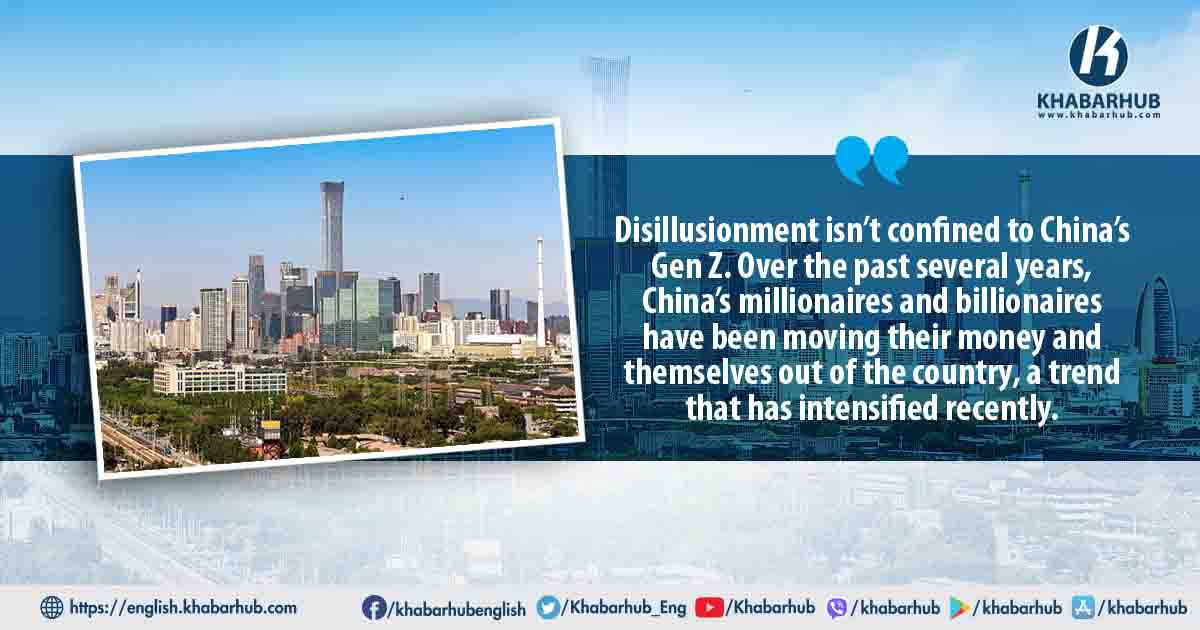Do the Chinese trust the CCP to restore prosperity? The answer is largely ‘no.’ Despite Xi Jinping’s promises of a bright future, scepticism prevails. Over the past decade, the Party’s actions have often worsened conditions rather than improved them.
Over the past decade, China has faced mounting domestic challenges and a tougher international environment. The contrast between then and now is stark.
In 2012, China’s economy was thriving, consumer confidence was high, and debt was manageable.
Today, the economy is struggling, confidence is low, and a debt crisis looms. Jobs were abundant in 2012, but by August 2023, over one in five young Chinese (ages 16-24) were unemployed.
In 2012, global factories, technologies, and investments poured into China, and the CCP’s economic model was celebrated. Now, the situation is markedly different.
Today, China’s trading partners see the CCP as untrustworthy and adversarial, leading to an exodus of factories and investments.
Historically, illegitimate leaders and failing political parties have leaned on past cultural institutions to unify a fracturing nation, especially when their governance is leading to ruin.
Geopolitically, Beijing initially partnered with the West and later expanded through the Belt and Road Initiative across Asia, Africa, South America, and Europe. Now, China aims to dominate technology and subjugate its partners.
The West’s pushback against this imperial ambition threatens China’s economic growth and technological progress.
In 2012, China’s per capita GDP was $6,301, while Taiwan’s was $21,295. By 2024, China’s per capita GDP is estimated at $13,136, and Taiwan’s at $35,129. While China’s income grew under the CCP, Taiwan’s grew without it, enjoying more freedoms.
Taiwan’s growth stemmed from fostering innovation and attracting capital investment into high-growth industries. In contrast, the CCP has often hindered China’s growth.
Significant development in China only began in the late 1970s and 1980s when Beijing opened up to Western investment and technology.
From the 1990s onward, the CCP seized successful companies, transferring them to Party members who siphoned off their wealth.
These ‘state-owned enterprises’ turned into ‘zombie’ companies, less profitable and efficient under Party control.
They were repeatedly recapitalized with increasing loans from banks backed by the People’s Bank of China (PBOC). Consequently, banks became ‘zombie banks,’ needing further PBOC support.
Eventually, this triangular financing scheme failed, threatening the entire financial system. This is the current state of China’s economy.
Due to various factors, the CCP has had to shift its communication strategy, adopting a more nationalistic tone. The Party and Xi Jinping promote a vision of a brighter future called the “China Dream,” while urging citizens to endure hardships and embrace the “Great Struggle” to restore China’s historical prominence.
To make this narrative effective, the Party looks to the past to maintain its current power. This is partly because Xi has broken the post-Mao Zedong political protocol of consensus rule, reverting to a Maoist model of CCP governance.
The CCP’s national self-improvement campaign under the 14th Five-Year Plan revolves around seven themes, including Xi’s leadership, the fusion of Marxism with Chinese characteristics, and blending tradition with modernity. Xi’s “China Dream” book envisions a grand future, but it merely repurposes the past.
China has become a risky place for both domestic entrepreneurs and foreign investors. Despite laws prohibiting capital outflows, the wealthy are acting while they can, aware of the true state of the Chinese economy.
Reviving classic Chinese cultural motifs and merging them with CCP propaganda is a desperate bid to legitimize the Party’s rule and Xi’s leadership.
Historically, illegitimate leaders and failing political parties have leaned on past cultural institutions to unify a fracturing nation, especially when their governance is leading to ruin.
Simultaneously, the CCP is intensifying its anti-West rhetoric to unify the nation, appealing to the cultural memory of the “Century of Humiliation” under Western domination from the mid-18th to mid-19th century. Are the Chinese people buying into this propaganda?
Perhaps a minority is, but the exact proportion is unclear and largely irrelevant. The real issue is the economic hardship faced by a billion people, exacerbated by the CCP’s policies.
The Chinese populace is not swayed by the CCP’s nostalgic rhetoric. Anthropologist Xiang Biao from Oxford University notes that Gen Z is facing a harsh reality.
“Young people have grown up believing that hard work and studying would lead to a well-paid, decent life. Now, they realize this promise is broken,” he told the BBC. Opportunities that were available to their parents are now scarce.
“This isn’t just about a lack of jobs or income; it’s the collapse of a dream that motivated their hard work,” Xiang said. “This breeds not only disappointment but also disillusionment.”
Disillusionment isn’t confined to China’s Gen Z. Over the past several years, China’s millionaires and billionaires have been moving their money and themselves out of the country, a trend that has intensified recently.
China has become a risky place for both domestic entrepreneurs and foreign investors. Despite laws prohibiting capital outflows, the wealthy are acting while they can, aware of the true state of the Chinese economy.
The CCP is pushing a new “China Dream,” ignoring that the previous one has turned into a nightmare. As Party members grow richer, the middle class shrinks.
No amount of Marxist or nationalistic rhetoric can change this reality or convince the people otherwise. However, the Party is certainly going to try.









Comment